Camden
The coast here was explored as early as 1605 by English explorer Captain George Weymouth but it was not until 1769 that settlers arrived to found Megunticook Plantation on the shore of Penobscot Bay. Less than 10 years later the Revolutionary War broke out and the plantation became an American encampment and hence a target of British raids. In 1791 the Massachusetts General Court incorporated Megunticook Plantation as Camden, named after British judge and nobleman Charles Pratt the first Earl of Camden who sympathised with the colonists during the Revolution. During the War of 1812, a gun battery was built on Mount Battie overlooking the village. There was nobody in the village trained to operate the guns, but the British didn’t know that and they stayed away. Peace brought prosperity to Camden, its industries included shipbuilding, an anchor factory, numerous mills and lime production. The lime industry was located in Goose River which separated off in 1891 as the town of Rockport. In 1892 a fire destroyed nearly all of Camden’s business district but it was quickly rebuilt in brick instead of wood. As the 20th century approached, the natural beauty of the area began to attract wealthy families who built summer ‘cottages’ in the area. The generosity of these wealthy families provided Camden with some elegant public buildings including the Opera House and Public Library. Camden continues to thrive, due not just tourism and boatyards but also electronics and credit card companies.
Chestnut Street Baptist Church
This is an iconic New England white church but in 2013 the beginning of October was too early for it to be accompanied by some classic New England fall foliage. The origin of the church goes back to 1808 when nine baptists met in Camden to set up a church. This small group did not have the resources to build a church so they met and worshipped in private homes and school buildings. In 1836 the Maine Baptist Convention sent Elder Kimball to Camden to help the congregation. He attracted more members and at last the building of a church could be contemplated. The church was built in 1837 on the village green overlooking the harbour. Over the years the tall, slender spire of the church has proved vulnerable to the Maine weather. It became unsafe and had to be replaced in 1853, 1887 and 1980. The town clock was installed in the spire in 1868. Chestnut Street Baptist Church remains an active house of worship to this day.
DLU180423
Camden Public Library
The 1892 fire also looms large in the story of Camden Public Library. A library was established in Camden in 1796 when it was a village of just 15 houses, but it closed in 1830 and the books were sold. In 1854 the Ladies’ Library Association set up a library in a private house, later moving it to the upper floor of a bank building. In 1892 the bank building was reduced to ashes. The people of Camden voted in 1896 to establish a free public library and set about the task of raising funds. It took time, but they succeeded. Having raised the money, they needed somewhere to build the library. In 1916 Mary Louise Curtis Bok, the daughter of newspaper magnate Cyrus Curtis, donated the land that they needed. Camden Public Library opened its doors on June 11, 1928 and itis still operating as a public library today.
Click on Minimap to navigate
Home > US States > New England > Maine > Mid Coast >
Camden Opera House
In the 1892 fire that destroyed most of the business district, Camden lost its town offices, several meeting facilities, and its opera house. The current Opera House was built in 1894 not just to replace the old opera house, it was also designed to provide meeting facilities, town offices and house the post office. Today Camden Opera House remains a multi-use building, hosting a variety of events as well as housing Camden’s municipal offices and police station.


To move forwards or backwards through the Maine trail click the arrows above, or select your next destination on the Minimap.
Farm House, Old Conway House & Museum
This is thought to be the oldest building in the Camden/ Rockport area, built the 1770s. The barn, maple sugar house and blacksmith shop have also survived and together they form the Old Conway House & Museum. It is open to the public June to September. We arrived at the beginning of October to find that it had closed for the season, so the picture of the interior had to be taken through a window. Click Tab 2 to see inside the farm house
The Harbour at Camden
Back in the Victorian era the town of Camden reverberated with the sounds of ships being built and mills powered by the Megunticook River. Fine architecture dating from its Victorian heyday coupled with a beautiful and sheltered harbour have made Camden a favourite with tourists and boaters. Click Tab 2 to see a heron on a rock in the harbor.
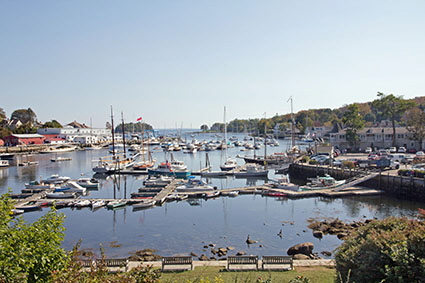
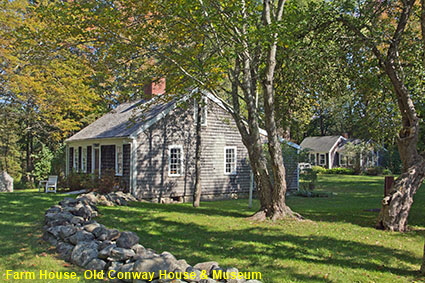
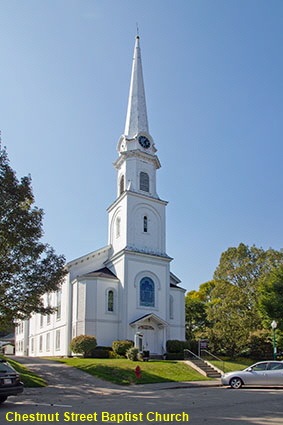
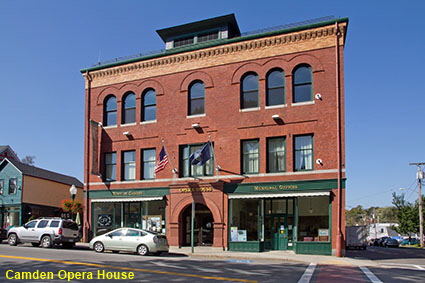
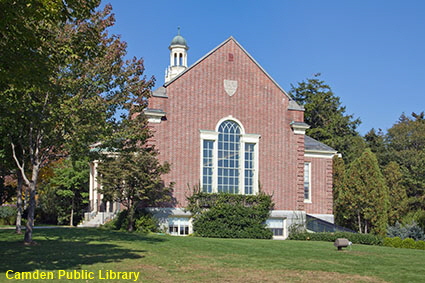
Megunticook Plantation
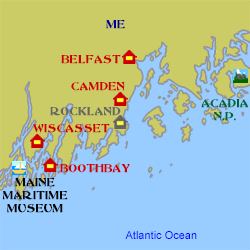

© Mike Elsden 1981 - 2025
The contents of this page may not be reproduced in full or in part without permission